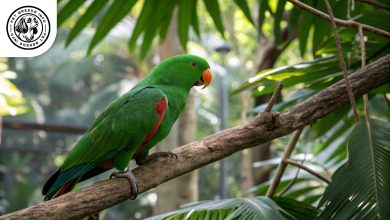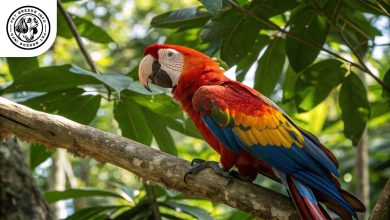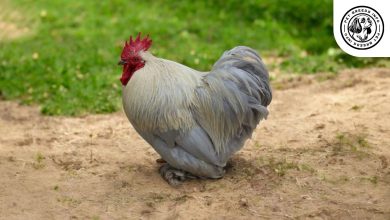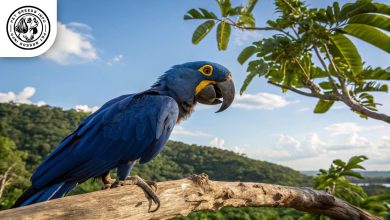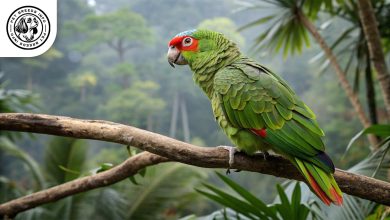Red-fronted Macaw Bird: Personality, Lifespan, Food & Care
General Introduction of the Breed
The Red-fronted Macaw (Ara rubrogenys) is an intelligent and social parrot species native to the arid valleys of Bolivia. It is also referred to as the ‘Red-cheeked Macaw’ due to its distinct facial markings. This rare and endangered parrot was first identified in the 19th century and remains one of the least known macaw species in the wild.
Table of Contents
| Common Name | Red-fronted Macaw |
| Scientific Name | Ara rubrogenys |
| Origin | Bolivia |
| Size | Medium; 21–24 inches (55–60 cm), 500–600 g |
| Lifespan | 40–50 years |
| Colors | Green body with red forehead, shoulders, and legs; blue wing tinges |
| Talking Ability | Moderate—can mimic sounds and simple words |
| Noise Level | Moderate to high—may vocalize when bored or excited |
| Social Behavior | Affectionate, social, bonds strongly with humans |
Physical Characteristics
The Red-fronted Macaw is a medium-sized parrot, typically reaching 55 to 60 cm (21-24 inches) in length, with a wingspan of approximately 80 cm (31 inches). Their average weight ranges between 500 and 600 grams (17.5 – 21 ounces). They have sleek green plumage with distinctive red patches on the forehead, shoulders, and legs. Some individuals may also have slight blue tinges on their wings. Their eyes are dark brown, accompanied by featherless pinkish-white skin around the facial area. They have strong, curved beaks designed for cracking nuts and seeds, and their tails are long and tapered.

Personality and Temperament
Red-fronted Macaws are highly intelligent and curious birds with a strong capability for learning tricks and mimicking sounds. They have a moderate to high energy level and require plenty of mental and physical stimulation. They form strong bonds with their owners and can be extremely affectionate, often craving attention. They thrive in social environments and interact well with humans, including children, when properly trained. Due to their playful and inquisitive nature, they enjoy puzzle toys and interactive playtime. These birds can also be sensitive to changes in their surroundings and may become anxious if their routine is disrupted.
Read More: Java Finch (Java Sparrow) Bird
Care and Maintenance Requirements
The Red-fronted Macaw is an active bird requiring daily exercise outside its cage to prevent boredom and behavioral issues. Ideally, it should be housed in a spacious aviary or large cage with perches, toys, and climbing structures. Grooming involves regular beak and claw trimming, alongside weekly baths to maintain feather health. Their environment should be kept at moderate temperatures, as they are sensitive to extreme cold. Regular cleaning of their cage, food dishes, and water bowls is essential to prevent infections.
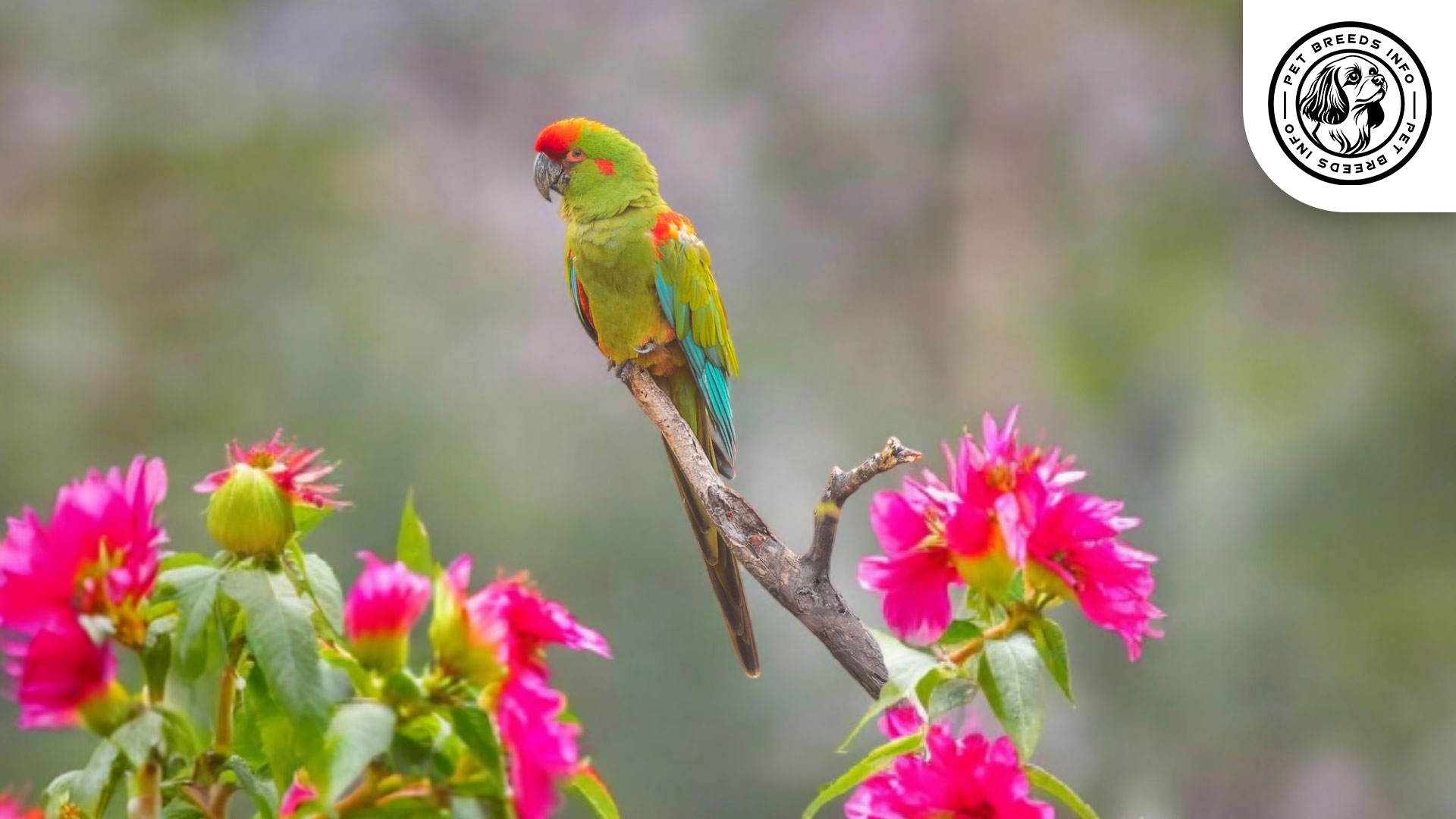
Diet and Nutrition
In the wild, Red-fronted Macaws primarily consume a diet of seeds, nuts, and fruits. In captivity, their diet should be well-balanced, including high-quality commercial pellets, fresh fruits, vegetables, and nuts. Foods to avoid include chocolate, caffeine, avocado, onions, and high-fat or salty foods. Proper portion sizes vary based on their activity levels, but they should be fed twice daily with fresh water available at all times.
Health and Common Medical Issues
Red-fronted Macaws are generally hardy but can be prone to obesity if overfed. Common health concerns include respiratory infections, beak and feather disease, and bacterial infections. They have an average lifespan of 40-50 years with proper care. Routine veterinary check-ups, vaccinations, and a balanced diet contribute to their long-term well-being.
Read More: Blue-throated Macaw Bird
Training and Behavior Management
These macaws are highly trainable and respond well to positive reinforcement techniques like treats and praise. Early training and socialization are important to curb potential aggressive behaviors. They should be taught basic commands such as stepping up, staying calm, and reducing excessive vocalization. Consistency and patience are key in establishing good behavior.
Interaction with Other Animals and Humans
Red-fronted Macaws are social birds that enjoy human companionship. They are friendly with children as long as interactions are supervised. While they can coexist with other parrots, territorial tendencies may arise, especially towards unfamiliar birds. They are better suited for families or individuals who can dedicate significant time to them, as they may experience stress or loneliness if left alone for long periods.
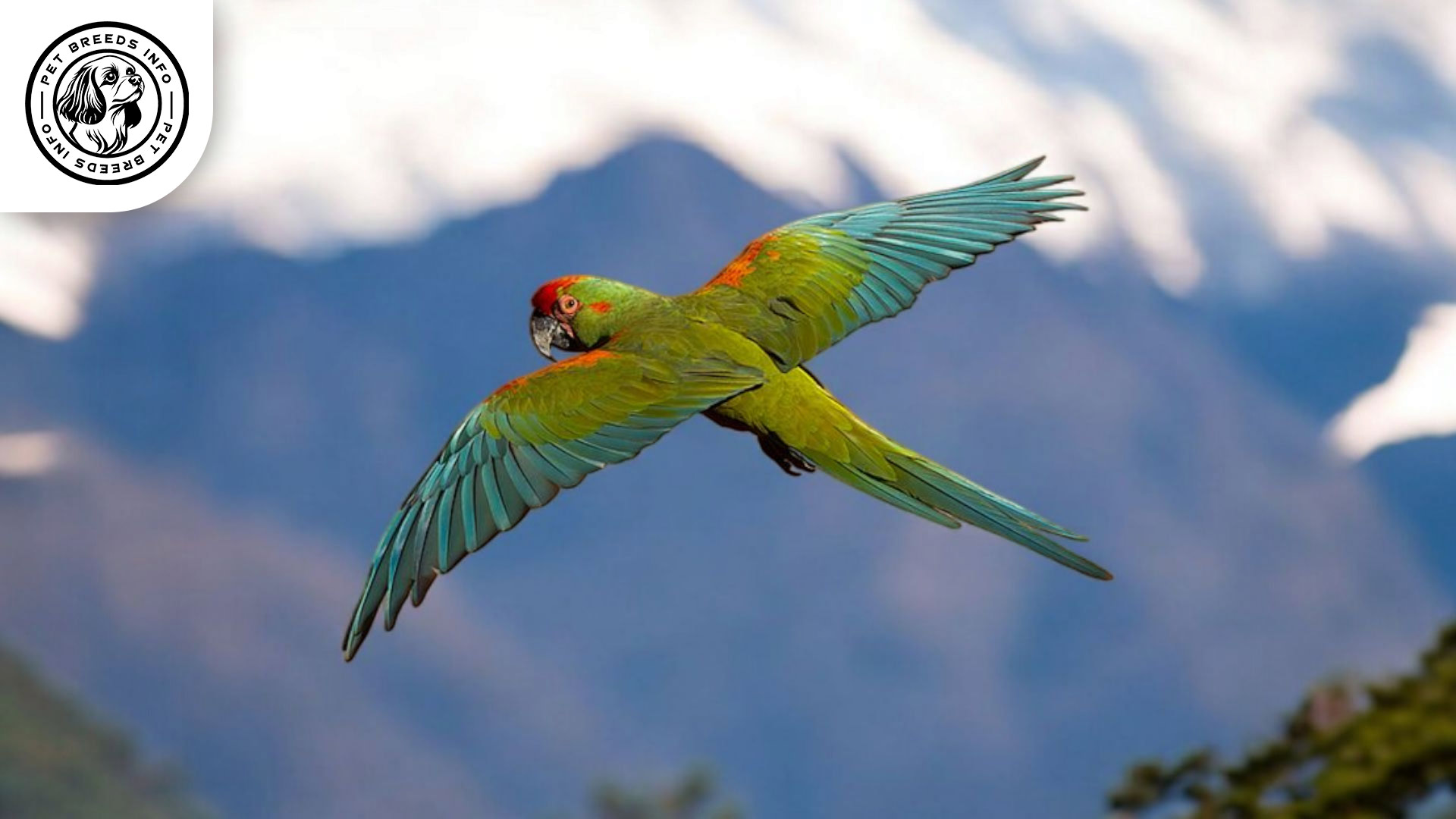
Price and Availability
Due to their endangered status, acquiring a Red-fronted Macaw can be challenging and expensive. Prices typically range from $3,500 to $6,000, depending on the breeder and legal considerations. It is essential to purchase from reputable breeders who follow ethical breeding practices and ensure that the bird was legally bred and not captured from the wild. Adoption from rescue organizations specializing in parrots is also an option for potential owners.
Conclusion and Final Thoughts
The Red-fronted Macaw is a fascinating and affectionate pet best suited for experienced bird owners who have the time and resources to meet its complex care needs. They thrive in environments where they receive plenty of social interaction and mental stimulation. Potential owners should consider their long lifespan, vocal nature, and need for large spaces before committing to ownership. With proper care, training, and attention, these intelligent birds make loyal and entertaining companions for dedicated bird enthusiasts.
Read More: Military Macaw Bird
FAQ
Where does the Red-fronted Macaw come from?
It is native to the arid valleys of Bolivia and is one of the rarest macaw species.
How social is the Red-fronted Macaw?
Very social—these birds form strong bonds with their owners and thrive on daily interaction.
Is this breed good for beginners?
No, it’s better suited for experienced bird owners due to its complex care requirements.
What should their diet include?
A balanced mix of pellets, fruits, vegetables, and nuts—avoid toxic foods like chocolate and avocado.

